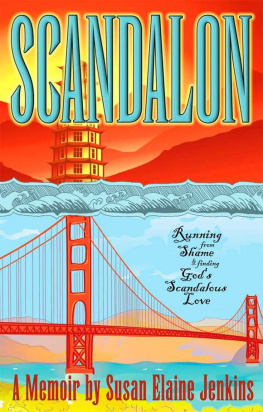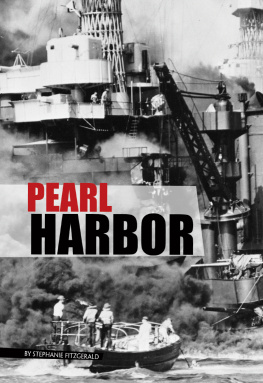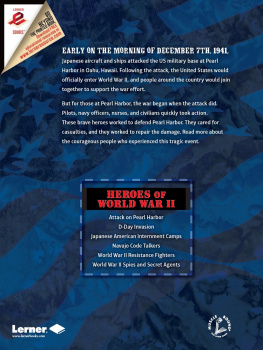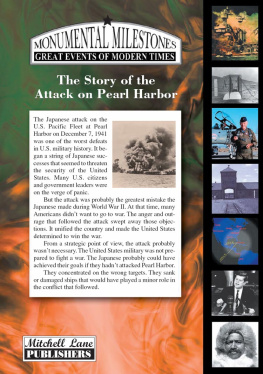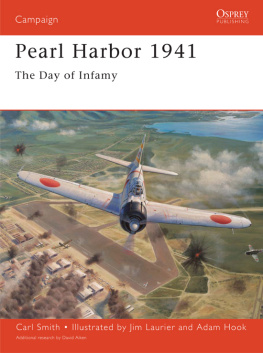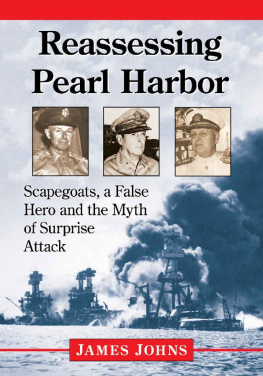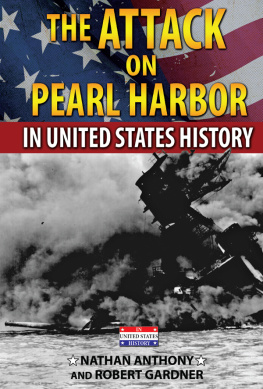World War 2:
Pearl Harbor Through Japanese Eyes
The First Stories of the Pacific Theatre

All Rights Reserved. No part of this publication may be reproduced in any form or by any means, including scanning, photocopying, or otherwise without prior written permission of the copyright holder. Copyright 2015
Disclaimer Notice:
Please note the information contained within this document is for educational purposes only.
Every attempt has been made to provide accurate, up to date and reliable complete information no warranties of any kind are expressed or implied. Readers acknowledge that the author is not engaging in rendering legal, financial or professional advice.
By reading any document, the reader agrees that under no circumstances are we responsible for any losses, direct or indirect, which are incurred as a result of use of the information contained within this document, including but not limited to errors, omissions, or inaccuracies.
Table of Contents
Introduction
Chapter 1: A Brief Glimpse Backwards
Chapter 2: Planning and Objectives of the Attack
Chapter 3: The Attack
Chapter 4: The Japanese Bomber
Chapter 5: The Prisoners, Strikers and Participants
Chapter 6: The Build Up To the Attack
Chapter 7: The Impact on the Japanese
Chapter 8: The Aftermath of the Attack
Conclusion
Check Out My Other Books
Instant Access to Free Book Package & More!
Introduction
The nature of human behavior is such that sometimes the unbelievable happens and truly defies logic and reason. Even more appalling, can be the fact that some of these logic-defying actions are knowingly committed by individuals or groups in moments when logic and reason were used.
One such occurrence took place decades ago in a quaint little harbor of a coastal country, cocooned by the waters of the mighty Pacific Ocean. The year was 1941 and the venue was Pearl Harbor on the small island of Hawaii. In the wee hours of the morning of December 7th, the mighty airplanes of the Imperial Navy of Japan launched a devastating attack of unprecedented scale on the American Naval base of Pearl Harbor. The airplanes of the Oriental kingdom rained death and devastation to the entire Pacific Fleet of the American Navy stationed in the harbor. To say that the attack caught the Americans by surprise would be a grave understatement. Almost the entire American Navy was wiped out on that cold morning under wave after wave of the Japanese attack. The skies turned fiery orange, bowing to the firepower of the Japanese Air Force, while the ocean below turned scarlet with the bloodshed that ensued.
Details and history behind the incident will be revealed in the following chapters of this book. First, we must try and understand the horror and bloodshed that was demonstrated to people around the world that day. The attack was initially perceived as an act of utter and absolute disregard, an exercise in uncalled aggression targeted at a nation that had, until then, kept away from the chaos of the World War II. As the word of the attack spread, the world at large construed the actions of Japan as irrational and impulsive. It was discovered later that year that there had been years of meticulous preparation behind the attack that achieved a never-before-seen accuracy rate of 85 percent.
With few exceptions, the incident had largely been seen from the American point of view. Much like how the Holocaust is almost always seen from the Jewish point of view. This book hopes to offer an analysis of the events from the Japanese point of view. Please be clear that the intention behind the composition of this book is not to take sides with one party or provide a kind a vindication to the other. Instead, the aim is to peel off the layers of presumptions and clichs associated with the attack and present a fresh perspective of the events that unfolded. It is the intention of this book to put forward to you Pearl Harbor, as seen by the Japanese.
This book has been written in a way that even readers that do not know or understand history can read and understand the events in all their gravity and magnanimity. The attack on Pearl Harbor is unanimously considered by historians, military strategists, political exponents, and social analysts to be one of the single most defining moments of the Second World War. The reason is simple. The attack prompted America to enter into the fray. War was formally declared on Japan the very next day and Italy and Germany also made retaliatory declarations in subsequent days. The rest, was history.
Finally, please allow me to make my gratitude known to you for purchasing this book. I hope that at the end of this book you will be able to comprehend and take in the occurrences of Pearl Harbor from the perspective of the Japanese and the American.
Chapter 1: A Brief Glimpse Backwards
In order to understand why this attack happened, we begin by looking at the some of the basic ideas and concepts that lead to the Pearl Harbor attack as well as the attack itself. For a better understanding, we begin by looking at the background of the attack including the position of the harbor and its geographical and strategic importance. There will also be a brief explanation of political and military objectives that led to the attack. Near the end of the chapter, we shall take a look at that inevitable offspring of war casualties. There were casualties on both sides, although those on the American side far outweighed the loss on the Japanese side.
Pearl Harbor
Pearl Harbor is a lagoon harbor formed from part of an island called Oahu. It is situated next to Honolulu in the state of Hawaii. Since the year 1887, it has been under the control of the Government of the United States of America. It began as a repair station for ships from the United States and eventually became the base for the Pacific Fleet of the US Navy. A major reason for this was the geographical advantage that was found in Pearl Harbor. It was perfect for accommodating large warships and aircraft carriers of the US Navy. It also served as a dockyard for their submarines.
The place was called Wai Momi by the native Hawaiians. The literal translation of the name means waters of pearl. It held a lot of significance to the traditions of the Hawaiian people and there are many legends as to how a navigable channel was constructed into the harbor. Regardless of legendary significance, the Japanese saw the strategic importance of Pearl Harbor and by having the US Navy in the Pacific region, it posed a threat to Japanese plans for that region.
The Background of the Attack
The attack on Pearl Harbor was entirely preventive in nature. It was designed to cripple the US Navy and prevent the United States from interfering or responding to the actions of the Japanese within the South East Asia region. The Empire of Japan was at that time poised to take over and annex a number of areas in that region including the overseas territories of the United States, Britain, and other colonial countries such as the Netherlands. The major areas targeted were, among others, Malaysia, Hong Kong, the Philippines, Guam, and Singapore.
Neutralization of the Pacific Fleet of the US Navy would mean that the largest and most effective defense against the Japanese actions in that region would be rendered ineffective. Although the attack was the reason why the United States declared war on Japan, the relations between the two nations were far from ideal. In fact, parties on both the sides were well aware of an impending war, although none knew when it would happen.






